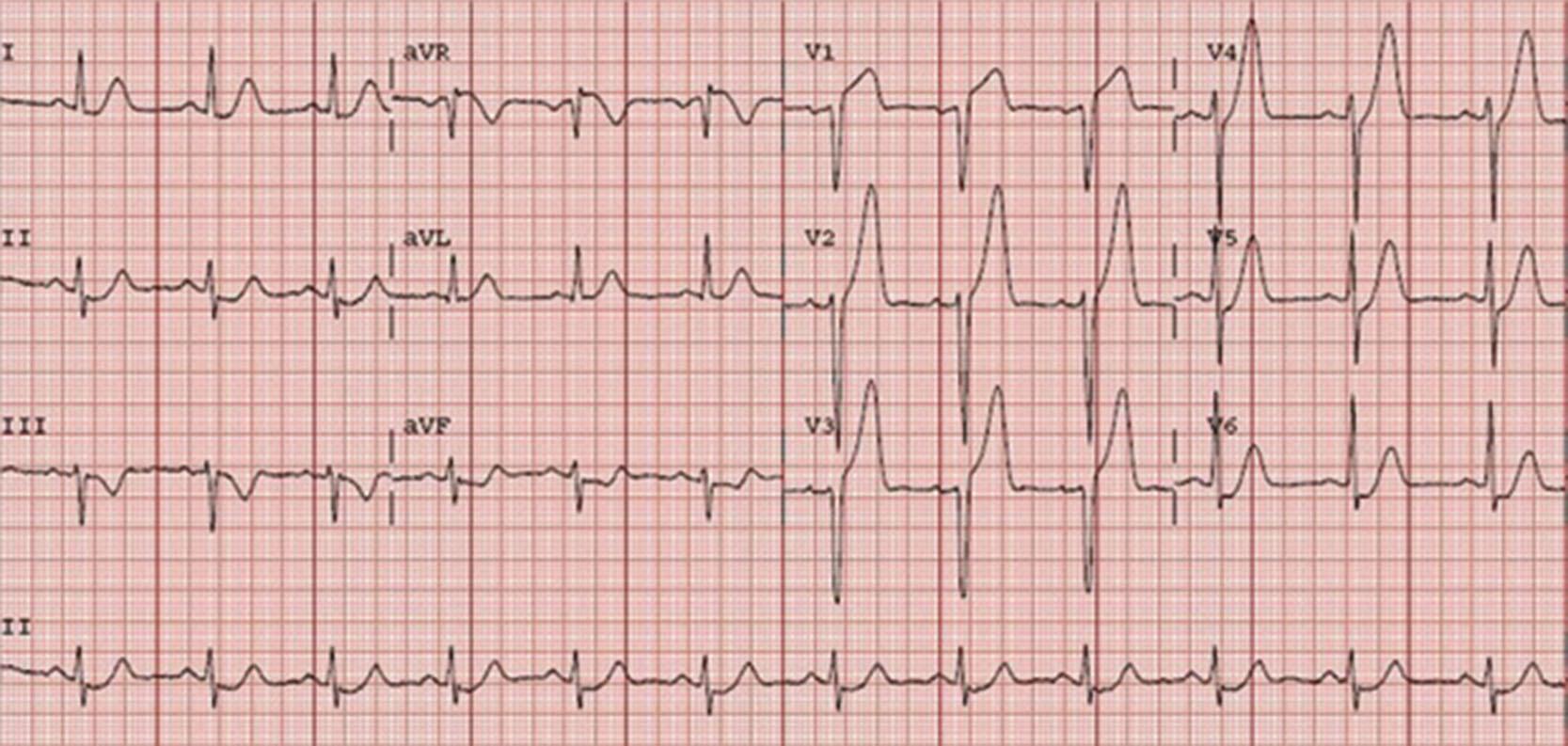Physical Address
304 North Cardinal St.
Dorchester Center, MA 02124
A rapid response event was initiated by the bedside nurse for a patient with sudden unresponsiveness. On prompt arrival of the rapid response team, it was noted that the patient was a 69-year-old male with a known history of type 2 diabetes, hypertension, COPD (on 4 L/min of oxygen at home), and tobacco abuse disorder, who was admitted with ST-elevation myocardial infarction and was two days post-coronary artery bypass grafting. Upon arrival, the bedside nurse was already performing cardiopulmonary resuscitation (CPR), and the attached cardiac monitor showed pulseless electrical activity (PEA).
Temperature: 95.7 °F, axillary
Blood Pressure: 80/40 mmHg while CPR being performed
Pulse: could not be palpated
Respiratory Rate: Ambu-bagged at ten breaths per min
Pulse Oximetry: 88% on 100% oxygen with Ambu-bag
A limited exam was done in the setting of cardiac arrest. It showed a pale, elderly appearing male undergoing chest compressions and bag-valve ventilation. No spontaneous activity was present, and the patient was pulseless. No other examination was performed during CPR.
The patient was intubated emergently to secure the airway. A total of two rounds of CPR were performed, and a total of two ampules of 1 mg (1:10,000) epinephrine were administered. A sine wave pattern was seen on the cardiac monitor during CPR ( Fig. 14.1 ). Return of spontaneous circulation (ROSC) was achieved after 5 min, and normal sinus rhythm was restored. Examination after the achievement of ROSC showed that the patient was responding appropriately to painful stimuli. A stat electrocardiogram (EKG) was obtained and showed peaked T waves in the precordial leads ( Fig. 14.2 ). Stat point-of-care (POC) electrolytes were obtained, which showed hyperkalemia with a potassium level of 7.2 mmol/L. Intravenous (IV) calcium gluconate, IV insulin and dextrose, albuterol nebulization, and 40 mg IV Lasix were administered. A stat basic metabolic panel was obtained and confirmed the POC electrolyte derangements. Serum magnesium and troponin levels were unremarkable. The glucose level was normal. He was transferred to the intensive care unit for further monitoring.


Become a Clinical Tree membership for Full access and enjoy Unlimited articles
If you are a member. Log in here